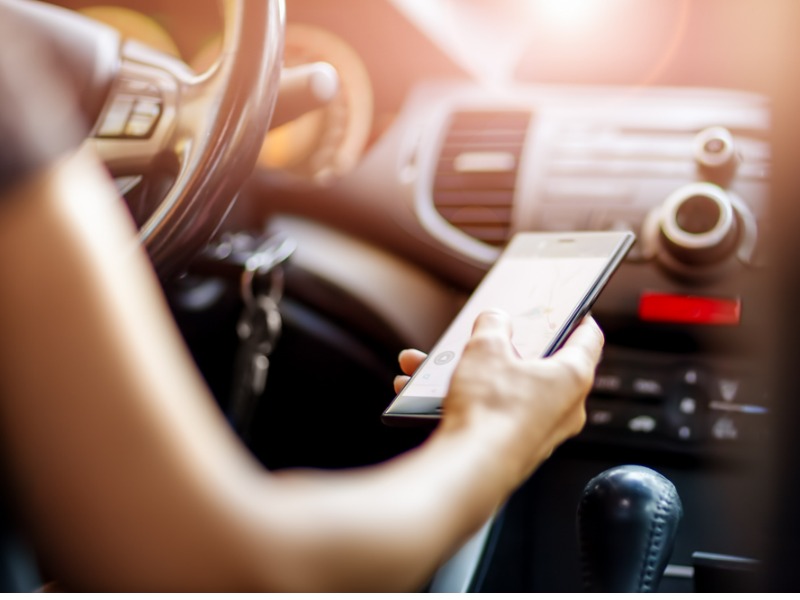More than eight in 10 Canadians admit they drive distracted

Eighty-three per cent of Canadian drivers engage in at least one distracted driving behaviour, and this has only increased in the past year, finds a recent survey. But distracted driving doesn’t come without its costs.
Non-digital distractions lead the survey results, with 67% of respondents reporting they eat or drink water/coffee while driving. Fifty-eight per cent report looking at or talking to a passenger, and 51% report reaching for an object while driving, Ratesdotca’s fourth annual distracted driving survey reveals.
What’s more, 43% of Canadians admit to using an electronic hand-held device while driving. This includes using a geo-navigational app on an unmounted device (29%), checking messages while stopped at a traffic light (24%), and making a hand-held phone call (17%).
Five per cent even report watching a video while driving, a 2% increase from last year’s survey.
The dissonance between driver’s thoughts and actions is evident — 58% of drivers believe distracted driving is the biggest threat to traffic deaths, yet many still engage in it anyway. This has only increased since 2021, when 47% of drivers noted distracted driving is the biggest risk.
Insurance consequences may aid in deterring distracted driving, Ratesdotca reports.
Survey data reveals a distracted driving charge can lead to an increase in a person’s auto insurance premium — 23% in Ontario and 18% in Alberta.
“If your own safety, and the safety of others, isn’t enough of an incentive to stay alert while driving, it’s possible an auto premium increase might pave the way toward safer driving practices among Canadians,” the report reads.
Distracted driving varies from province to province.
Alberta accounted for the highest levels of distracted driving, with 90% of respondents saying they engage in at least one distracted driving behaviour, and 58% saying they engage in at least one digital distraction.
Québec saw the lowest percentage of people admitting to at least one activity on both the full list of distracted driving behaviours (73%) and the digital distractions (36%).
Industry observers have noted the increase in distracted driving and say it may correlate with higher claims costs.
“There is a trend of increases in distracted driving, which is occurring both in the United States and to some degree in Canada, as well as just poor driving habits,” Rosemarie Mirabella, director at AM Best, said n an earlier interview with Canadian Underwriter.
“If you look back at some of our [pre-pandemic] market briefings in Canada…increasing claims costs were impacted by distracted driving,” adds Gordon McLean, senior financial analyst at AM Best. He lists phone usage, eating or drinking, and talking to passengers while driving as potential behaviours to which this may be attributed.
Fortunately, many Canadians recognize the risk distracted driving poses. The number of respondents who believe eating or drinking is safe while driving is 58% — down from 78% in 2021. Similarly, only 28% now think reaching for an object while driving is safe compared to 57% in 2021.
Feature image by iStock.com/LeManna



